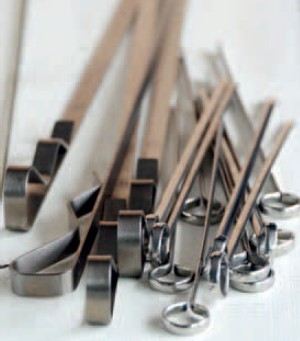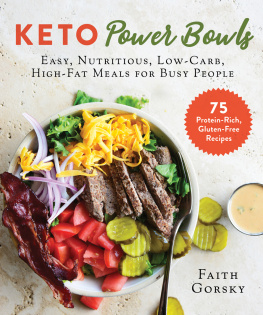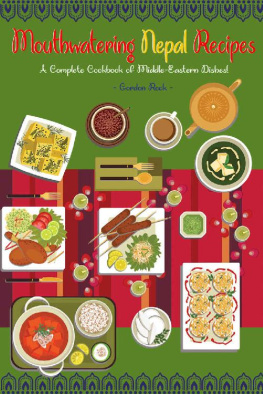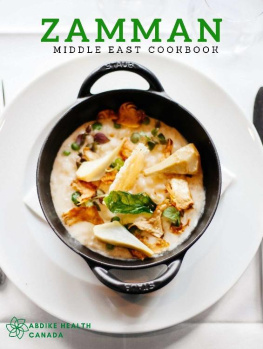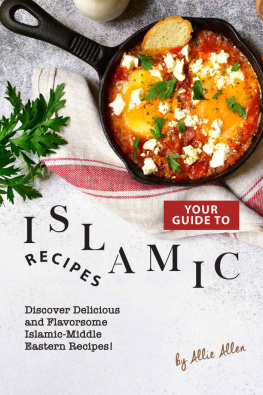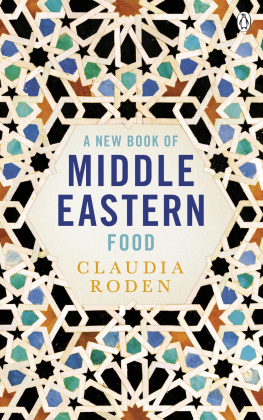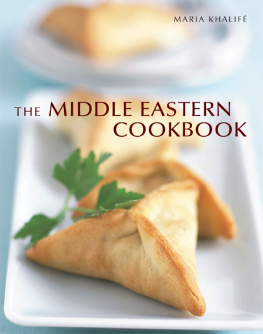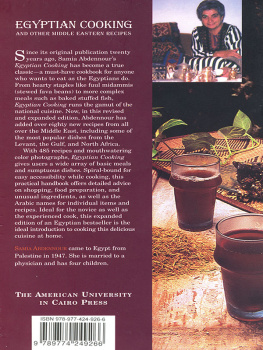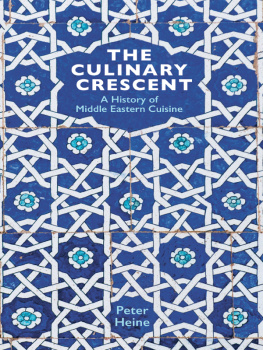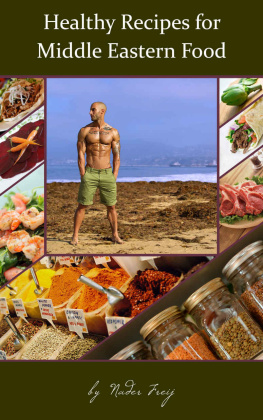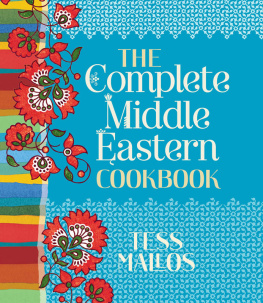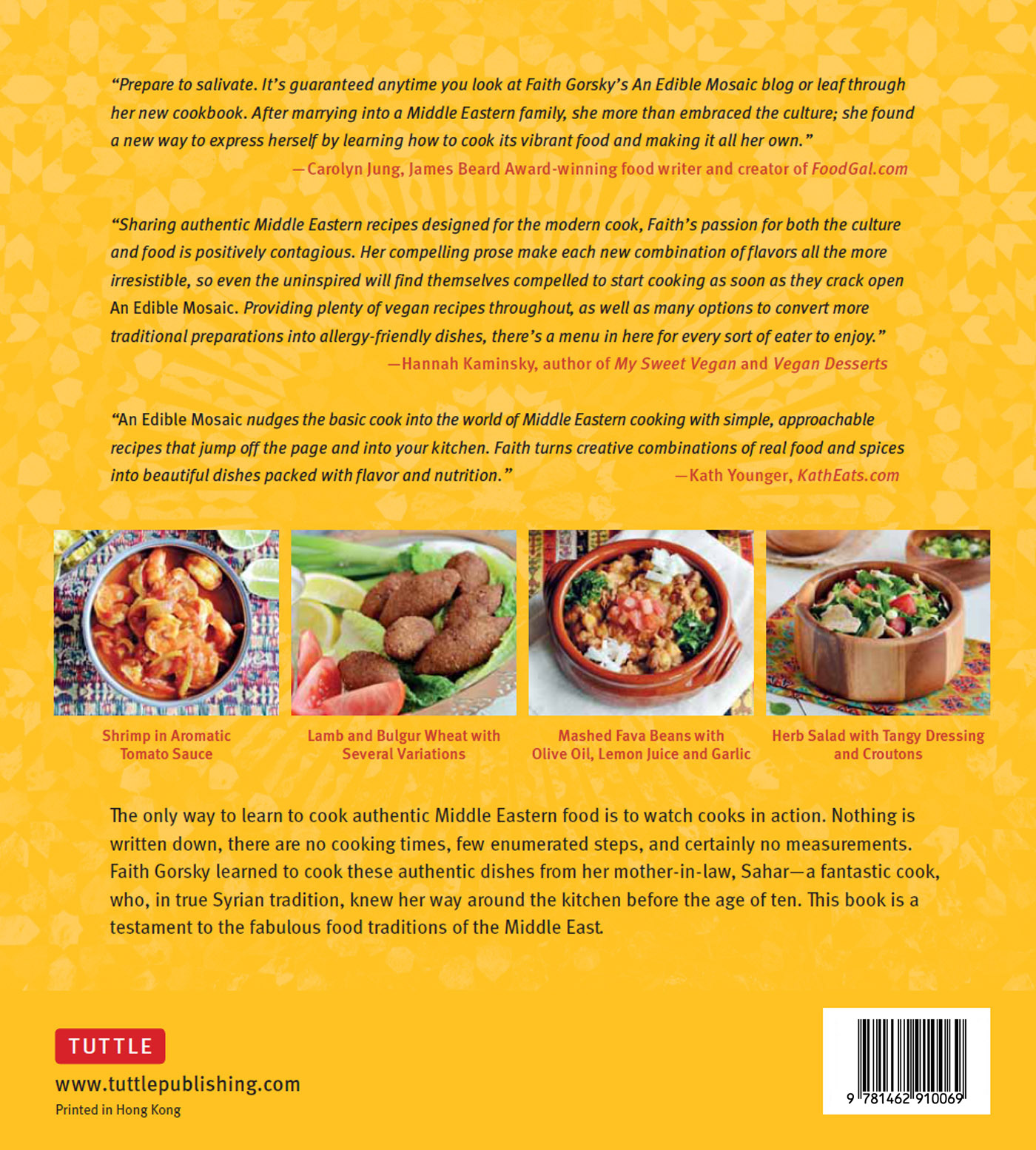First and foremost, all thanks to God for this opportunity. A heartfelt thanks goes to my mother-in-law, Sahar; without her beautiful nefus ala el ekel and willingness to teach me the art of Middle Eastern cooking this book wouldnt exist. Thanks to my parents Elizabeth and Donald who have always encouraged me to follow my dreams. Thanks to my patient husband Mike who not only willingly ate every recipe I made for this book, but also supported me through a career change, cheering me on the entire time. Thanks to my father-in-law Abraham for sharing his knowledge and for his help with translation. Thanks to hussein for showing me around a Middle Eastern kitchen and sharing his expertise. Thanks to Rhanda and Zahra for sharing bits of Middle Eastern cuisine and culture with me. Thanks to tareq and noor for opening their Middle Eastern kitchen and their hearts to me. Thanks to my recipe testers, including, Ellen trotta, nihal Oguz, Cathy Pezzino, and especially Lynn Smith. Thanks to all who shared countless meals with Mike and I as I wrote this book, especially Marco, Erika, Donny, Rosie, and Rachel. Thanks to the author of my foreword, Lorraine Elliott (www.NotQuiteNigella.com), my blog sister, mentor, and dear friend although weve never met in person. Thanks to my blogging friends who previewed my book, including hannah Kaminsky (www.BitterSweetBlog.wordpress.com), Kath Younger (www.KathEats.com), and Carolyn Jung (www.FoodGal.com). Thanks to the blogging community and especially my treasured readers of An Edible Mosaic; I wrote this book with you in mind and I hope the recipes in it bring you as much joy as they do me. Special thanks to NH. Thanks to my editor, Bud Sperry, as well as the rest of the talented team at Tuttle Publishing.
Basic Cooking Tools
Glancing through the list of cooking tools , you'll notice that some are very traditional ( mortar and pestle) and others are for today's modern kitchen ( think food processor! ). Modern kitchen tools and appliances are by no means necessities ( that is , if time is not of the essence) , since cooking tasks can always be done by hand the traditional way but these amenities sure do make our lives easier . And on the flip side , traditional tools still have their place too ; I use my mortar and pestle nearly every day , even if it's to do nothing more than crush garlic or grind spices . Many of the tools listed here are probably already in your kitchen ; others can be found in any department store , and there are a select few that you will probably only be able to find in Middle Eastern stores .

Cookie Molds (Alleb Maamoul): there are three different types of mold used for making Date-Filled Cookies (page ), and each is used for a different filling. The mold for date filling is circular with a flat top, the mold for pistachio filling is circular with a pointed top, and the mold for walnut filling is oval shaped. Some molds are made of plastic, but most are made of wood with intricate carvings inside and a flat rim above the well, which is where you firmly tap on a hard surface to remove the pastry. Most molds are about the same size: the date and pistachio molds are approximately 2 inches (5 cm) in diameter, and the walnut mold is about 2.5 inches x 1.5 inches (6.5 cm x 3.75 cm).
Food Processor (Khulat): this modern-day kitchen tool has become a very handy addition to todays Middle Eastern kitchen. Things that were traditionally made by hand with a mortar and pestle (see page , now take a fraction of the time to make in a food processor.
Large Cutting Board/Utility Board (Methrameh): A large cutting board is handy for so many kitchen tasks; in the Middle Eastern kitchen, a large board is particularly useful for making salads since they frequently have many different components, most of which are meticulously chopped (see Making Middle Eastern Salads, page ). I prefer sturdy plastic boards over other materials, since they can be thoroughly disinfected; also, I like to keep a separate board for cutting meats and vegetables/fruits.

Middle Eastern Coffee Pot (Della): there are two kinds of pots used: one for traditional/special occasion Arabic coffee (called Qaweh Arabi or Qaweh Mourra , which means bitter coffee), and one for everyday coffee, which is commonly known as turkish coffee ( Qaweh Turkiyeh) ; these pots are called the same thing, but are differentiated by the type of coffee you want to make. The pot used for Arabic coffee comes in many sizes and styles but has a pointed, beak-like spout. The pot used to brew everyday coffee also comes in many sizes and styles, but its sloped, with a narrower top leading down to a slightly wider base.
Mincing Knife/Mezzaluna (Ferrameh): this knife has a single or double curved blade with a handle on both ends, allowing food (such as herbs or other vegetables) to be minced in a back-and-forth rocking motion. The good thing about this tool is that it typically makes quick work out of mincing; however, the downside is that its easy to bruise herbs using it. Generally, if an herb is being added to a cooked dish, such as cilantro to Sauted Greens and Cilantro on page ).


) is used instead of a mortar and pestle to save time.
Round Baking Pan (Saynieh): these resemble round cake pans; they are about 2 inches (5 cm) deep and come in a variety of sizes from very small to very, very large. They are useful for cooking any number of things, such as Coconut Semolina Cake (harissa) (page ). Extra large pans are also very useful for kneading dough with easy clean up.


Serving Platters (Saynieh): Serving platters come in many different shapes, sizes, and styles. Fancy ones are used to serve guests and plainer ones get more everyday wear. Small platters ( saynieyet qaweh) are used for serving perhaps an afternoon coffee with a small plate of cookies and larger platters ( saynieyet akkel) are used for serving a rice dish or for arranging a maza spread on it.
Sharp Paring Knife (Sikkeen): this is a smallish knife (typically about 3 to 4 inches/7.5 to 10 cm) long with a smooth edge. The small size of this knife gives a great amount of control to the user, and is used as an all-purpose knife in many Middle Eastern kitchens. To keep her knives sharp, my mother-in-law sharpens them about twice a week on the bottom of a stoneware plate.
Vegetable Corer (Hafara): this tool is a long, narrow blade curved into a half moon shape; it is used to hollow out vegetables such as squash, eggplant, and potato for stuffing. If a vegetable corer isnt available, a narrow, sharp-tipped vegetable peeler or a narrow apple corer may work.
